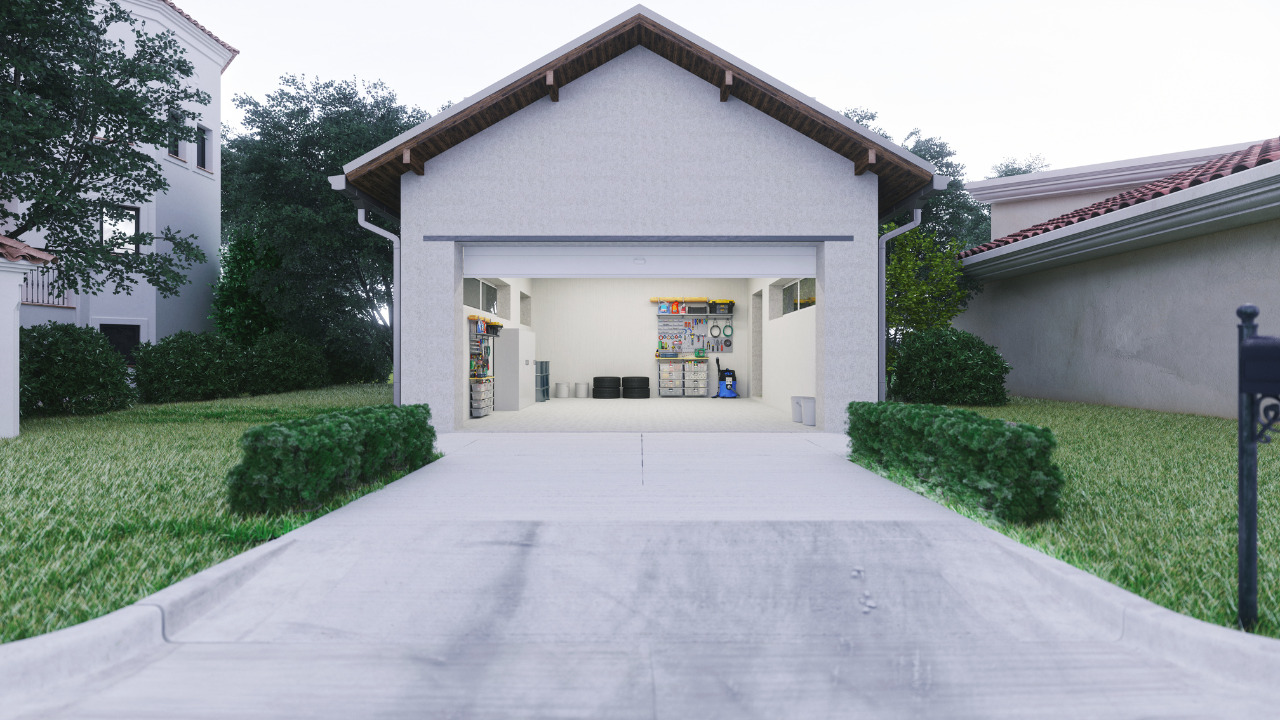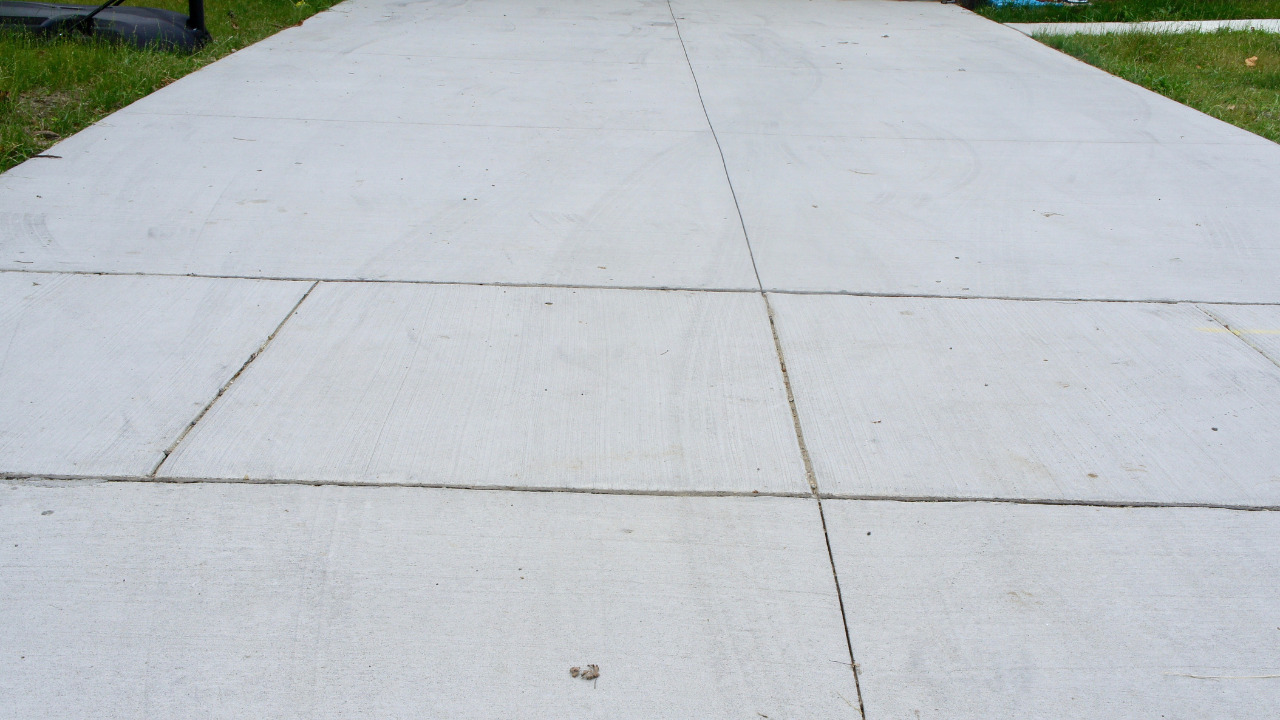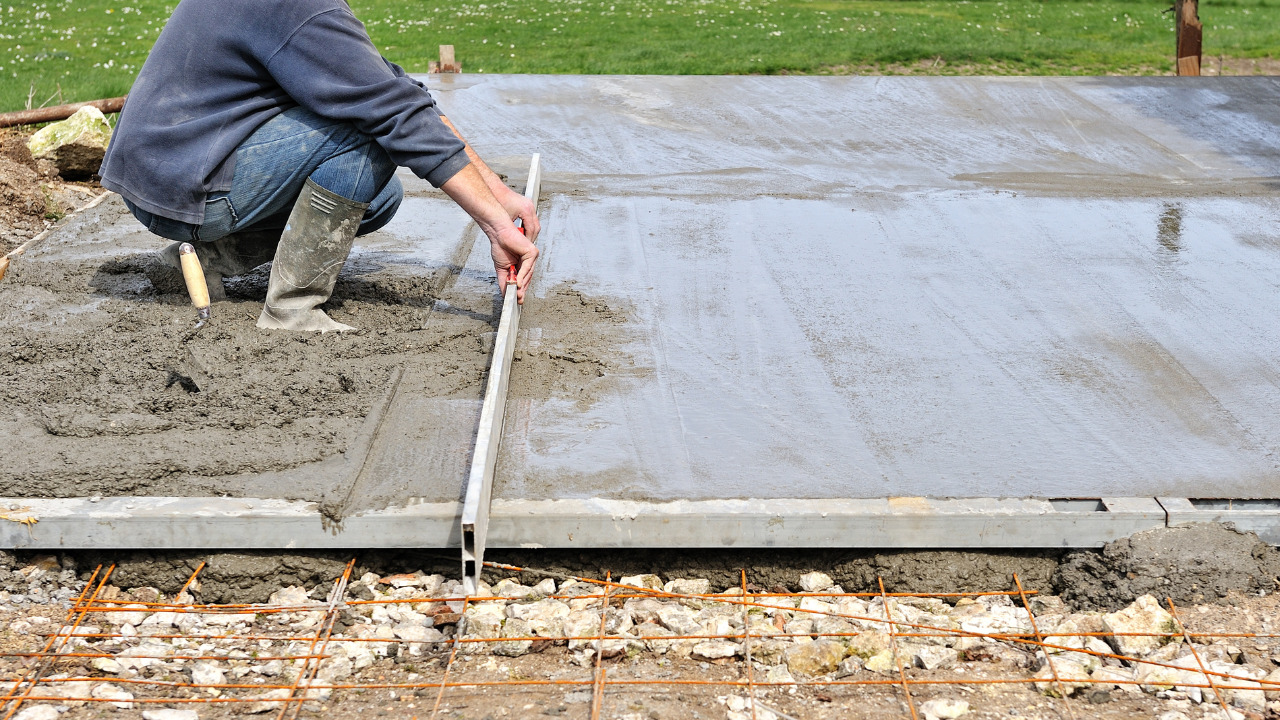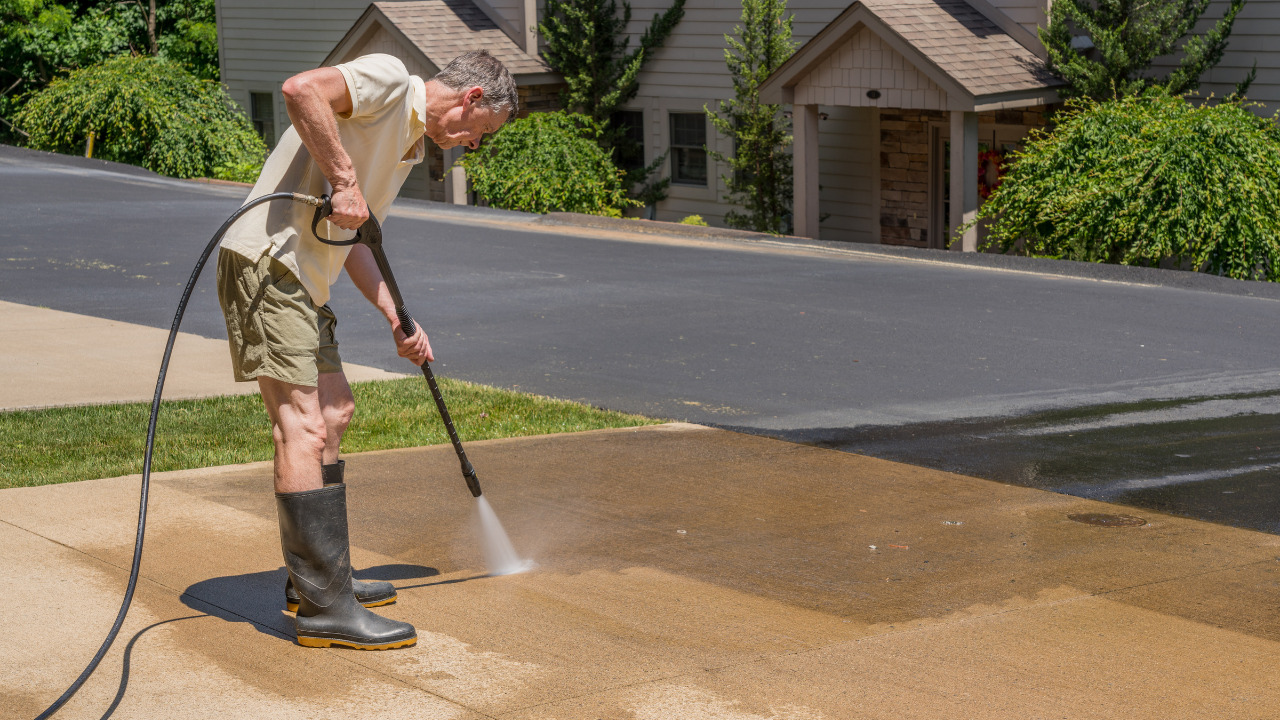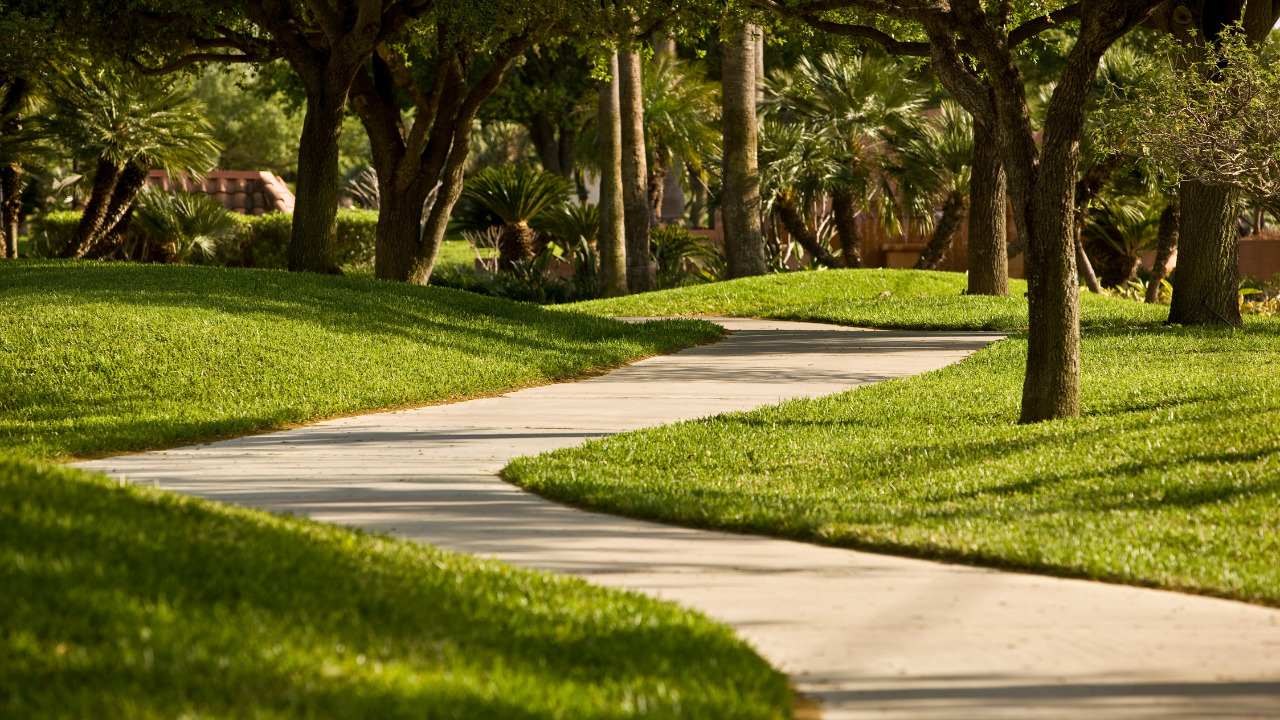When you step out of your house, you will always want a flat, paved area to walk or drive on and we all know, the natural ground is uneven and bumpy. This means that to pave an area, an intentional attempt has to be made to make it negotiable for riders and pedestrians. That is where the concept of flatwork seeps in and it has made it way easier to move around and is aesthetically-pleasing, too.
The term ‘concrete flatwork’ refers to any horizontally-poured (flat) concrete paving that makes up the hardscape in your area including the sidewalks, driveways, patios, porches, walkways, etc.

Broadly speaking, all types of concrete flatworks can be put into two categories namely on-site flatwork and off-site flatwork. Let us discuss what each of them has got to serve.
The on-site flatwork comprises concrete construction that is carried out within the private homeowners’ lots and is present behind the city’s right-of-way. Now the question arises that what is meant by the term “right-of-way (ROW)”?
The public right of way (ROW) is a legal concept that grants access to public to certain areas or paths that may include public roads, footpaths, etc. and all these are maintained by the government itself. In other words, within the right of way, without the permission of the local authority, you cannot go for any construction or renovation work.
On-site flatwork comprises driveways, porches, patios, small walkways, etc., all made of concrete.
On the other hand, off-site flatwork comprises all the concrete flatwork outside the city’s right of way (ROW). It entails city sidewalks, drive approaches, etc.
Table of Contents
Types of Concrete Flatwork
Concrete flatwork can be seen in almost every locality you pass by and they efficiently serve the purpose. There are many areas in which concrete flatwork can be achieved, some of which are given as follows;
Driveways
Concrete flatwork in driveways is a preferred choice on part of the homeowners and this work is carried out on-site i.e., within the private ownership of a property. For driveways, the minimum prescribed thickness of concrete slab is 4 inches. However, this can vary depending upon the anticipated vehicle load that the driveway will bear.
For residential buildings, a lesser or minimum slab thickness will suffice but for commercial buildings, the thickness has to be at least 6 inches.
The concrete flatwork for driveways may or may not be reinforced. However, the provision of reinforcement provides additional strength and durability to the flatwork and it may be in the form of some wire mesh or rebar and can also be added into the concrete mix in the form of fibers.
Sidewalks
Sidewalks serve the safety of pedestrians and it is a very common practice to make them out of concrete. However, if you go for concrete flatwork, you can achieve many styles and textural finishes that are not just aesthetically pleasing but also resilient in their performance.
As a general practice, a thickness of 4 inches is sufficient for the concrete flatwork in sidewalks. However, for heavy foot traffic and anticipated occasional vehicular traffic, a thicker layer of concrete is required which may or may not be provided.
Patios
Patios can also be a part of on-site concrete flatwork. They can serve as an outdoor space for comfort and relaxation. As far as the aesthetics are concerned, the color and texture of concrete flatwork for patios can be customized to suit the surroundings.
Concrete Floors
In many commercial and industrial buildings, you will see concrete floors and they rightly serve the purpose they are meant to. For floor works in commercial and industrial areas, the concrete flatwork should preferably be reinforced to withstand heavy foot traffic and can also be given a decorative finish.
Pool Decks
Pool decks are also a part of concrete flatwork. They can be made resistant to slippage by imparting the desired texture to the flatwork. In addition, you can pour in a variety of colors and styles as per your choice.
An important aspect to consider while going for concrete flatwork for pool decks is to make the surface resistant to water penetration. If that is not catered to, you will end up with cracks with the passage of time because the ingress of water will make the concrete weak.
Steps in Constructing a Concrete Flatwork
-
Subgrade Preparation
The first step in preparing a concrete flatwork, be it on-site or off-site, is to prepare the subgrade. Subgrade is the soil that has to ultimately bear the applied pressure from the flatwork. In order to prepare the subgrade, use a finish grader to actually cut the top part for the flatwork.
Therefore, you must establish an acceptable tolerance in grade for when the work transitions from your finish grader to your flatwork. Before placing the concrete, the subgrade soil is moistened to make the compaction process easy.
Prior to the preparation of subgrade, it is important to know the engineering characteristics of your soil. In this regard, the subgrade soils for concrete flatwork should have very low expansion potential and should not be sensitive to changes in moisture content. This is because if the underlying soil is corrosive or expansive, the overlying concrete with a high compressive strength will be used.
-
Formwork Installation
Once the subgrade has been prepared and checked, the formwork for concrete flatwork is laid by using lumber and stakes that frame the areas for concreting work. You must ensure that the frames are all levelled up and have square corners and plane edges.
The concrete that is to be cast on the subgrade is provided a little slope to allow for drainage of water and to prevent any impoundment. This slope is usually kept at 2 percent or 0.25 inch/foot of run.
-
Concrete Pouring
Once the flatwork is formed, the concrete is conveyed or poured from the mixer trucks present on site to where the concrete is to be cast. For the purpose of pouring concrete, chutes are used that are inclined platforms that convey concrete from the mixer.
If chutes are not a viable option for pouring concrete because of the trucks not being able to access the site, concrete pumps or hoses can also be used for executing the pouring operation.
-
Concrete Levelling and Finishing
Once the concrete is poured over the flatwork, it is levelled with a wooden or metallic screed which is a type of straight-edge. Following this, the concrete is finished. The finishing of concrete flatwork can be of any of the following types;
- Float finish involves using a float to smoothen the top surface of concrete. A float is tool that removes any imperfections from the surface of poured concrete to get a very smooth finish.
- Broom finish may also be done and it involves using a broom to give a rough texture to the surface. This is done by dragging the broom over the concrete surface. This type of surface finish is non-slippery even in wet conditions.
- Exposed aggregate finish intends to deliberately impart an aggregate texture to your concrete. It is achieved by washing the top layer of concrete in order to expose the natural edges of stone aggregates. This type of finishing is also resistant to slippage and gives an aesthetic look.
- Stamped concrete may also be formed by using any stamping mold to impart any required texture to it.
- Colored concrete may also be created by adding some coloring pigments into the concrete mix prior to its placement. With colored concrete for your flatwork, you can align it with your surroundings to create a pleasing and aesthetic look.
- Just like colored concrete uses a pigment in the mix to give concrete some color, stained concrete can also be created for your flatwork and it also imparts color to it. However, in this case, a color or stain is applied on top of the concrete surface to get the desired color.
The choice of finishing operation for your concrete flatwork will depend on many factors such as the desired look, the intended use of flatwork, the budget allocated for this work, etc.
Reinforcement in Concrete Flatwork
Steel reinforcement in the form of mesh or any other reinforcement type may be provided for concrete flatwork. Normally, when the thickness of concrete slab is large, it is preferable to reinforce it. However, for small thicknesses, the reinforcement may be omitted.
The reinforcement in concrete flatwork also depends upon the anticipated loading on the slab. If it is a drive-way, you can expect heavy vehicles to negotiate through the area. It is then preferable to use some steel mesh and embed it inside the concrete to serve as a reinforcing material and provide added strength and resistance against slab cracking.
The following reinforcement types can be used to embed inside the flatwork to provide augmented strength;
- Wire mesh
- Steel rebar
- Fiber reinforcement
Control Joints in Concrete Flatwork
Every time of concrete is prone to cracking as it ages. However, for concrete flatworks, the best way to get controlled cracking without affecting the aesthetics too much is by providing control joints at suitable intervals in preferably both the directions.
These joints will prove to be the planes of weakness and the induced stresses will be released in the form of cracking at these pre-existing joints. This will help preserve the aesthetics of the concrete.
Established Guidelines for Exterior Concrete Slabs, Sidewalks, and Driveways
The minimum established thickness of concrete flatwork or slabs for exterior concrete slabs, sidewalks and driveways is four inches and for this minimum, no reinforcement is mandated from the geotechnical perspective. However, it is important to properly cure the concrete to avert shrinkage cracking.
If there is an anticipation that the flatwork might get subjected to occasional vehicular or traffic load, you ought to go for a larger thickness (6 inches or more) and depending upon the soil conditions and the locality, you may reinforce the slab to give it added strength.
Precautions While Pouring and Finishing Concrete Flatwork
The execution of concrete flatwork requires effort on part of the crew to get a smooth and levelled surface where you can drive or walk easily. The following are some of the precautions that can be used as a token of guidance while carrying out the concreting work on the site.
- If the concrete flatwork is to be constructed by hauling the old concrete and throwing it away, you must uniformly excavate and compact the underlying subgrade before you begin with placing the new concrete layer.
- The subgrade must be properly pitched for drainage purposes and the inclination must be ensured by the crew on site.
- Setting the grade at the slab surface is a crucial step and you must use a string line and level for this purpose.
- It must be ensured that the subgrade is free of frost, ice, snow, standing water or any other contaminants.
- When the concrete is levelled with a straight-edge, it is important to wait until it stops bleeding before continuing the finishing process. Finishing of concrete while it is still bleeding can cause crazing or scaling as working the bleed water in will weaken the surface.
- The floating operation to embed any aggregates must be carried out when no bleed water is seen on the top surface of the concrete.
- The control joints should extend at least one quarter into the depth of the slab.
- When the troweling operation is carried out, make sure you do not use a steel towel since it traps air or moisture at the surface and could cause scaling.
- To ensure that the concrete surface does not dry out and weaken prior to complete hydration, a topical curing compound may be used. The curing compound must be added just when it stiffens enough to prevent marring or erosion on the surface.
- If the weather too dry or windy, the evaporation of water will expedite. In this case, use an evaporation retarder to prevent rapid escape of water from the concrete surface that may otherwise affect the hydration process and strength gain in concrete.
- If you feel like the water is evaporating from the concrete surface rapidly, do not add water on top of the surface as it will affect the water-to-cement ratio of the concrete mix.
Significance of Concrete Flatwork
Many construction projects require concrete flatwork and while for private ownership, this work may extend a small distance, the public works entailing concrete flatwork may extend a longer distance beyond the paved surface.
The following points will picture the significance of concrete flatworks in the public and private domains.
- When compared to the natural ground, concrete flatwork is incredibly durable and can withstand appreciable loading without giving in to cracks and other forms of distress. The durability aspect of concrete flatwork makes its use advantageous in extreme weather conditions, both in indoor and outdoor spaces.
- You can customize the look of your concrete flatwork and can match it with the surroundings to give an aesthetic look. Many forms of visually-appealing textures can be imparted to the concrete with a variety of colors and it is like adding cherry on the top of your work.
- The concrete flatwork can also be made more resistant to slippage by going for either a broom finish or exposed aggregate finish. This can help prevent the risk of accidents due to slipping.
- Concrete flatwork requires very less maintenance and the surface can easily be cleaned up.
- It is a cost-effective solution for horizontal laying of concrete and it also makes the cleaning and clearing works easy.
What is the Cost of Concrete Flatwork?
The cost of various types of concrete flatwork depends on many factors. These include the purpose the flatwork has to serve, the concrete thickness of the quantity of concrete to be manufactured, the textural finish and color to be imparted (if any), the presence of reinforcement in the flatwork, etc.
Obviously, if the concrete flatwork is reinforced, it will incur additional costs. Similarly, if you go for stamping the concrete or giving it any color, accordingly the cost of the project will rise.
The three most important factors that have a direct bearing on the cost of flatwork are as follows;
- The area to be covered with concrete flatwork decides the cost for obvious reasons. If a larger area is to be covered with flat paving, of course, the cost will be more.
- The concrete quality and the provision of reinforcement in it also affects the overall cost a great deal. If concrete with a higher compressive strength is used in flatwork, the cost will also be augmented and if it is to be reinforced, the expenses will spike accordingly.
- The type of flatwork finishing that you desire to have has a bearing on the project cost. If ordinary work is to be carried out and no special consideration is given to the texture or color, the costs chart will only show a nominal cost. However, if you intend to customize the flatwork through different colors, textures, surface sealants, etc., the cost will also surge in accordance with the level of customization.
Frequently Asked Questions (FAQs)
How to determine the appropriate thickness of concrete flatwork for a particular project?
For this, you first need to identify the intended use of the flatwork construction as to whether the slab will function as a pedestrian walkway or a driveway. Of course, in the later case, the loading on the slab will be heavier and accordingly, high concrete strength and slab thickness will be required.
Apart from the loading conditions that the slab will be subjected to, the underlying soil also somehow dictates if a greater thickness is needed. So, you need to evaluate the soil conditions. Thirdly, the local building codes of practices should also be consulted to get a better picture of your project.
Can we repair a concrete flatwork?
The repair of concrete flatwork depends upon the severity of damage and whether going for repair will be an economically-viable option than reconstruction. However, the following are some of the ways in which you can repair the flatwork.
- If you see small open cracks in the flatwork, you may use an epoxy or a patching compound to patch that area.
- If the cracks are wide open and large, it is better to go for resurfacing. This includes adding a layer or flatwork on top of the damaged layer. This method is also helpful if the surface becomes uneven or worn out with the passage of time.
- Minor surface imperfections can be removed by grinding and polishing technique. This involves grinding the area to smoothen out the irregularities and surface imperfections.
- Concrete flatwork normally fails in the vicinity of the control joint and for this, oftentimes, joint repair is required. For this, a joint filler or sealant may be required that also prevents water from seeping into the joint.
- The concrete slab will require replacement if the damage or cracking spreads to an extent that repairing becomes an uneconomical option.


